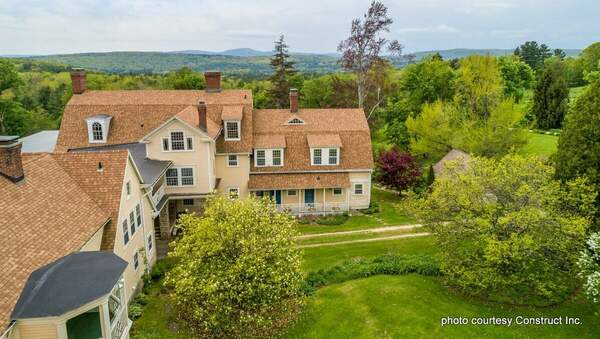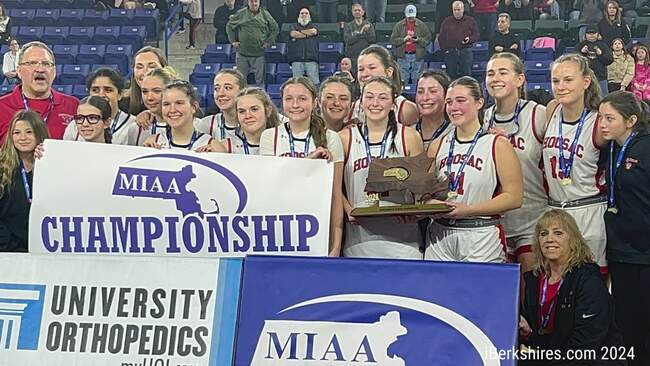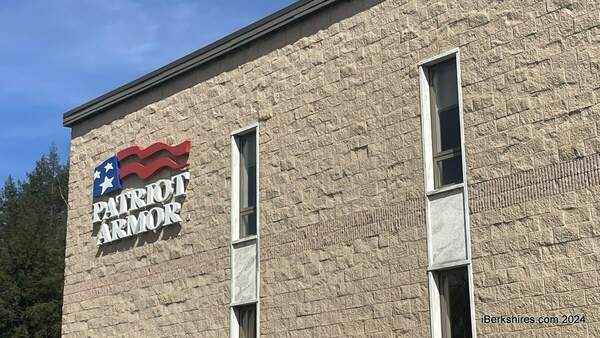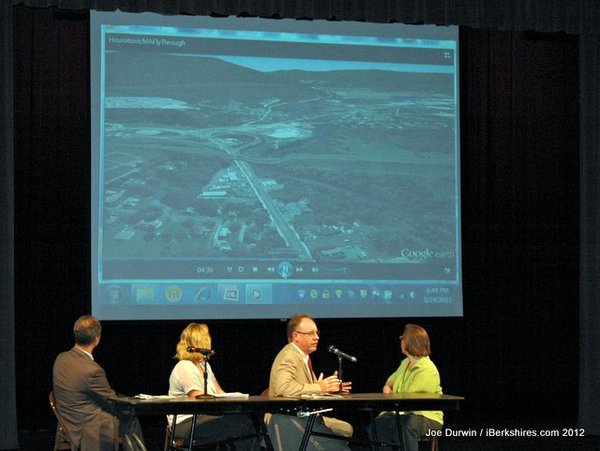
EPA Outlines Potential Plan for Housatonic Cleanup
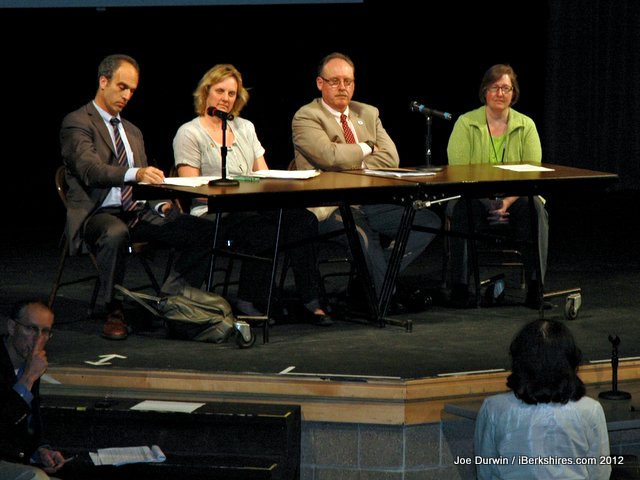 MassDEP Commissioner Kenneth Kimmel, left, Department of Fish and Game Commissioner Mary Griffin and Curt Spalding of EPA take questions about the cleanup plan. |
That was the message that emerged Thursday as representatives from state and federal environmental agencies met with more than a hundred concerned area residents at Lenox Memorial High School to discuss their current thinking on the controversial issue of river cleanup.
"We have a lot more work to do, and a lot more public comment will come in," said Kenneth Kimmel, commissioner of the state Department of Environmental Protection. "But I will say I think we're in a much better place than we were seven months ago when we heard loudly and clearly from people in the Berkshires that they wanted us to make an effort to get on the same page with the EPA."
Kimmel referred back to a public hearing in Lenox in October in which the state outlined its plan at the time. Public commentary and collaborative efforts between the federal Environmental Protection Agency and the state governments of Massachusetts and Connecticut since that time resulted in an eight-page report released by the EPA last week. This report, which officials are calling "tentative and preliminary," details the potential approach they hope to use to enact remediation efforts.
This new plan calls for removing about 25 percent of the PCBs currently in and around the remaining unremediated length of the Housatonic, sometimes referred to as "the rest of the river." This, the EPA says, will bring the level of pollution level to within one deemed safe for the public without destroying the natural character and diverse ecosystems of the river.
 |
"Removing all the material in this area would be virtually impossible," said H. Curtis Spalding, EPA regional administrator for New England. "I think people here would find that to be a very stark solution."
Complete removal of the toxic materials, the team of combined agencies says, would permanently alter the river and do irreparable harm to its ecosystems. However, their current approach is based on what they call "adaptive management," which leaves room for revising their strategy to embrace new technologies as they become available, and incorporate them into remediation and monitoring over future decades.
General Electric will be responsible for the cost of whatever remediation is ultimately decided upon.
Polychlorinated biphenyls, or PCBs, are carcinogenic chemicals used heavily by General Electric at its former transformer plant in Pittsfield. Prior to their ban in 1977, the company is known to have illegally disposed of numerous quantities of the toxin in the area for decades. In addition to demonstrated toxic and mutagenic health effects, PCBs have been shown to be associated with certain types of cancer.
One key aspect of the current plan calls for all contaminated soil that is removed to be transported out of the county, instead of creating landfills for it within Berkshire County. The proposal to create three such landfills in Southern Berkshire County drew vehement opposition when it was put forth in an earlier 2010 plan from the EPA.
"It is a different plan than the state proposed," said Spalding. "It meets the criteria the federal government has for protecting human health."
The plan, Spalding stressed, is not finalized, and will continue to be informed by public input. This includes concerns voiced by numerous residents in two hours of Q&A that followed the EPA presentation Thursday.
"I'm concerned that only 25 percent of the PCBs are going to be removed, and this is our one opportunity to do an effective cleanup," said Pittsfield resident Valerie Anderson. Anderson also raised concerns that the cleanup of the rest of the river was taking place while contamination risks upriver in Pittsfield continued to exist, including Silver Lake, Hill 78, and PCBs buried under the former GE property now owned by SABIC.
The EPA representative indicated that while Silver Lake remediation was still a major priority, cleanup of the other Pittsfield areas was unlikely.
"That's not going to happen," said Spalding, of removing the PCB-soaked soil of Hill 78 behind Allendale Elementary School.
Rest of the River 2012
Tags: EPA, Housatonic, MassDEP, PCBs, Rest of the River,

